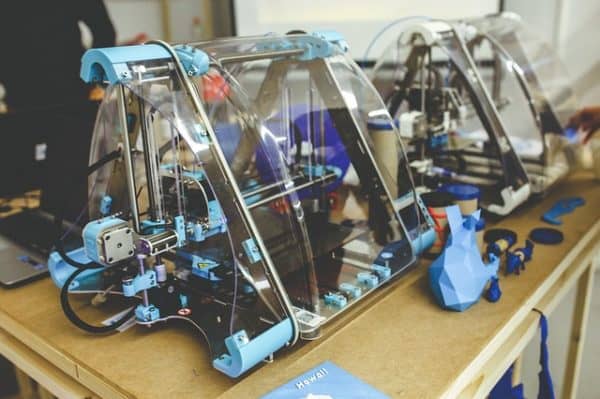
Imagine if you could print out foods items, clothes, toys or practically anything else at home without having to pay someone else for it or having to buy them at a store. This is the future that 3D printing has brought in for us. This is the kind of innovation that will let us bid farewell to copyright laws forever. You can get as many copies as you want of any object in 3D as long as you have the structural plan for it in hand. It has been revolutionizing the whole process of manufacturing physical objects.
3D printing technology, otherwise called additive manufacturing, is the creation of three dimensional objects from their specific digital models. The process doesn’t simply include a one-step printing, even though the name may suggest so. It is basically building up an object by adding layers upon layers of the materials used, until it reaches the required size and shape.
3D Printing, or three-dimensional printing, is a technology, the roots of which goes all the way back to the twentieth century. After several failed attempts by both individuals and groups of scientists, it was in 1986 that Charles ‘Chuck’ Hull invented and patented a 3D printer. From then on, the technology took a long while to gain popularity among the general public and to have its full potential known to the world. But with the production of an entire human bladder using a 3D printer and successfully transplanting it in a patient, the scientists at Wake Forest Institute of Regenerative Medicine opened a whole new door of possibilities where the 3D printing could be employed.
In 2008, in an open source experiment, titled the RepRaP, a 3D printer was used to build a replica of the same from scratch. Soon, it was discovered that the printers could be used to print using a variety of materials. This was a huge innovation even for 3D printers as it meant getting a long way in engineering, medicine, aeronautics, architecture and the many other complicated yet expensive sciences and their respective industries . Other than plastics, one could use a 3D printer to print using materials like glass, wood and metals among other things.
The future of this single technology seems to hold no limits. Today we are capable of producing jewellery, clothes, utensils et cetera in printers. The future envisions building homes, vehicles and drones with the help of 3D printers, which is absolutely possible, if not so simple as printing out bracelets or a pair of jeans. The worldwide revenue of the 3D printing industry is expected to cross the $21 Billion mark by 2020.
3D printers are rapidly making their way into households in the 21st century. 3D printers that come with a DIY assembly tag are easily available in markets now. Kids are using them as we speak to add a unique touch to their science projects. Prosthetic legs, artificial bones, whole human kidneys and architectural prototypes are being built out of raw materials using 3D printers. This is one such innovation that will bring about unimaginable levels of change in every walk of life.
 Gearfuse Technology, Science, Culture & More
Gearfuse Technology, Science, Culture & More


